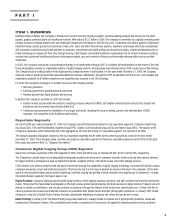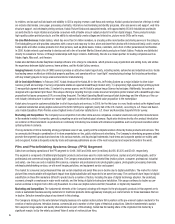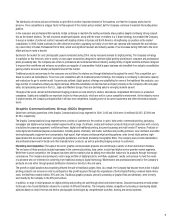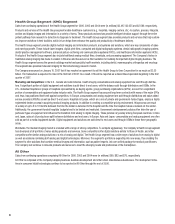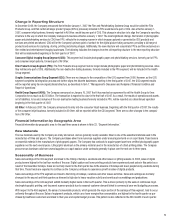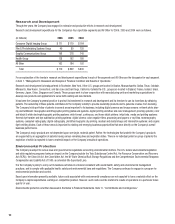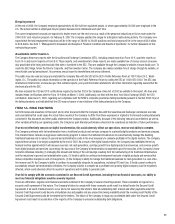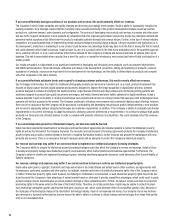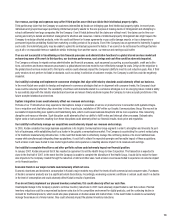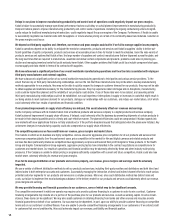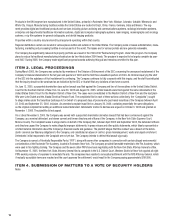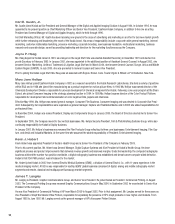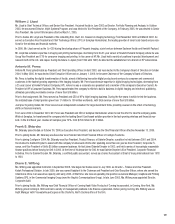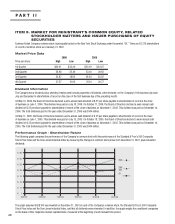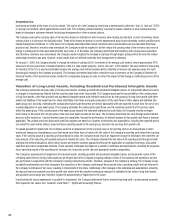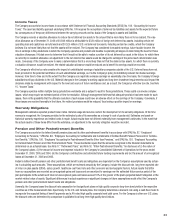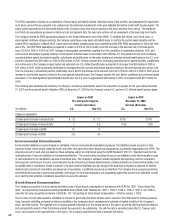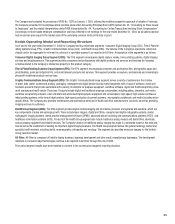Kodak 2006 Annual Report Download - page 22
Download and view the complete annual report
Please find page 22 of the 2006 Kodak annual report below. You can navigate through the pages in the report by either clicking on the pages listed below, or by using the keyword search tool below to find specific information within the annual report.
Economic uncertainty in developing markets could adversely affect our revenue and earnings.
Kodak conducts business in developing markets with economies that tend to be more volatile than those in the United States and Western Europe.
The risk of doing business in developing markets such as China, India, Brazil, Argentina, Mexico, Russia and other economically volatile areas could
adversely affect Kodak’s operations and earnings. Such risks include the financial instability among customers in these regions, political instability and
potential conflicts among developing nations and other non-economic factors such as irregular trade flows that need to be managed successfully with
the help of the local governments. Kodak’s failure to successfully manage economic, political and other risks relating to doing business in developing
countries and economically and politically volatile areas could adversely affect its business.
Because we sell our products and services worldwide, we are subject to changes in currency exchange rates and interest rates that may
adversely impact our operations and financial position.
Kodak, as a result of its global operating and financing activities, is exposed to changes in currency exchange rates and interest rates, which may
adversely affect its results of operations and financial position. Exchange rates and interest rates in certain markets in which the Company does busi-
ness tend to be more volatile than those in the United States and Western Europe. There can be no guarantees that the economic situation in develop-
ing markets or elsewhere will not worsen, which could result in future effects on earnings should such events occur.
Management has concluded that the Company maintained effective internal control over financial reporting as of December 31, 2006. If
we discover a material weakness in the future, we may not be able to provide reasonable assurance regarding the reliability of our finan-
cial statements. As a result, our business, brand and operating results could be harmed.
Effective internal control over financial reporting is necessary for the Company to provide reasonable assurance with respect to our financial reports.
If the Company cannot provide reasonable assurance with respect to its financial reports, its business, brand and operating results could be harmed.
As disclosed in the Company’s 2005 Annual Report on Form 10-K, and in its Quarterly Reports on Form 10-Q for each of the first three quarters
of 2006, management’s assessment of the Company’s internal controls over financial reporting identified a material weakness in the Company’s
internal controls related to the completeness and accuracy of the Company’s deferred income tax valuation allowance account. During the year ended
December 31, 2006, the Company has made significant progress in executing the remediation plans that were established to address the material
weakness identified above. This resulted in material improvements in the Company’s internal control over financial reporting, including the successful
remediation of the material weakness in internal controls related to the completeness and accuracy of the Company’s deferred income tax valuation
allowance account as of December 31, 2006. Internal control over financial reporting may not prevent or detect misstatements because of its inherent
limitations, including the possibility of human error, the circumvention or overriding of controls or fraud. Therefore, even effective internal controls over
financial reporting can provide only reasonable assurance with respect to the preparation and fair presentation of financial statements.
If we cannot protect our reputation due to product quality and liability issues, our business could be harmed.
Kodak products are becoming increasingly sophisticated and complicated to design and build as rapid advancements in technologies occur. Although
Kodak has established internal procedures to minimize risks that may arise from product quality and liability issues, there can be no assurance that
Kodak will be able to eliminate or mitigate occurrences of these issues and associated damages. Kodak may incur expenses in connection with, for
example, product recalls, service and lawsuits, and Kodak’s brand image and reputation as a producer of high-quality products could suffer.
ITEM 1B. UNRESOLVED STAFF COMMENTS
None.
ITEM 2. PROPERTIES
The Company’s worldwide headquarters is located in Rochester, New York.
The CDG segment of Kodak’s business in the United States is headquartered in Rochester, New York. Kodak Gallery operations are managed from
Emeryville, California. Kodak Inkjet Systems operations are located in San Diego, California and Rochester, New York. Many of CDG’s businesses rely
on manufacturing assets, company-owned or through relationships with design and manufacturing partners, which are located close to end markets
and/or supplier networks.
The FPG segment of Kodak’s business is centered in Rochester, New York, where film and photographic chemicals and related materials are manufac-
tured. Other manufacturing facilities in Windsor, Colorado; Harrow, England; and Xiamen, China produce photographic paper. Additional manufacturing
facilities supporting the business are located in China, Mexico, France, India, Brazil and Russia. There are a number of photofinishing laboratories in
the U.S. and distribution sites throughout the world.
Products in the GCG segment are manufactured in the United States, primarily in Rochester, New York; Dayton, Ohio; Columbus, Georgia; Weatherford,
Oklahoma; Windsor, Colorado; and San Diego, California. Manufacturing facilities outside the United States are located in the United Kingdom, Ger-
many, South Africa, Israel, Bulgaria, China, Japan, Canada and Mexico. The segment provides digital and traditional products and services including
prepress consumables, workflow and proofing software, color and black-and-white electrophotographic equipment and consumables, high-speed,
high-volume continuous inkjet printing systems, wide-format inkjet printers, high-speed production document scanners, and micrographic peripherals
and media (including micrographic films).


